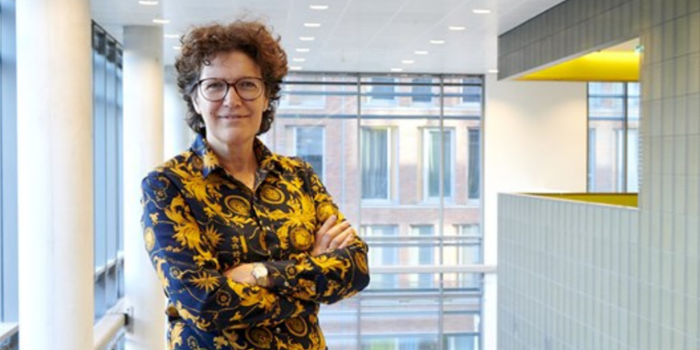Concrete step toward responsible IT
Yet the transition to responsible IT is within reach, Piersma argues. Her book System error, please restart (a term from computer history) symbolizes that task for her research team, which wants to create responsible ICT. Especially now that artificial intelligence is on the rise.
How can you make different design choices and build responsible IT? In her book, Piersma formulates new frameworks that should provide clarity to IT practitioners and designers.
Digital Integrity
First, Piersma argues, you can work from the principle of ‘digital integrity’ when designing. "If blood is taken from you, as a rule you have given permission for that. But digitally, personal data are constantly being used and analyzed, without your knowledge at all. This data is processed even when it is not needed." To buy a festival ticket, for example, your name and address are not needed, but the online webshop asks for them from standardized input fields.
Digital comfort
A second important principle that designers can take into account is digital comfort. Piersma: "Some apps are easy to download and convenient to use, but still cause a little voice in the back of your head saying: is this safe? What happens to my personal data? They invade your personal space, and that doesn't feel comfortable."
As a designer, you can also focus on that deeper felt comfort of users, rather than just ease of use. More control over data is important. "Give people control over their own IT system: who sees my data, what can I see myself, can I block or control things? We need to bring systems closer to people. If you give these guidelines to designers, other designs will come out."
The human touch
Another guideline is the human scale. "We use artificial intelligence for everything these days, even for problems that have long since been solved. That sometimes leads to irresponsible solutions. Using cameras with image recognition algorithms to count numbers of travelers on a train or in a supermarket? There are other methods to do this. NS, by the way, monitors crowding by weight of train cars; a fine solution."
Finally, Piersma mentions future-proofing as a design principle: building sustainably and robustly for the long term. "Make sure it works and keeps working, even if the application is used on another computer system." Kate Raworth's donut principles fit this perfectly: use IT design choices to minimize the burden on the earth and respect the social context.
Those are the four underlying principles that designers can use to design differently. "A substantial difference from an ethics framework with which you verify that you have checked off all the boxes."
People will change
"We have cried long enough about what is wrong," Piersma concludes. "My team investigates how we can do things differently, to give that push in the direction of being responsible. My theory is: the technology is often already there. It is the people and society who have to start implementing it. People will start to see and embrace the changes. And the IT people are now also up to the task of programming digital systems differently with different design choices."
The pursuit of responsible IT ultimately requires a different attitude from users, Piersma argues. These have high expectations and assume that all systems work well. Users must begin to realize that ICT and cloud services are not abstract and high-tech, but have a direct impact on our physical living environment. "’The cloud’ is not a cloud in the sky, but a center in the ground that needs to be cooled."
Data vault
Piersma does not believe that responsible IT means everything has to be redone. "Believe me, we won't be happy if later our banking app turns out not to work anymore because we started from scratch. A handy solution, for example, is a data safe, in which you store your own data and give others permission to use certain data. With a data safe, you give a shop only a safe number and the item you want to buy. You give the courier your address and to the bank you give the order to pay. That is very different from every webshop collecting all your data and passing it on to the bank and the courier."
Source: Hogeschool van Amsterdam

